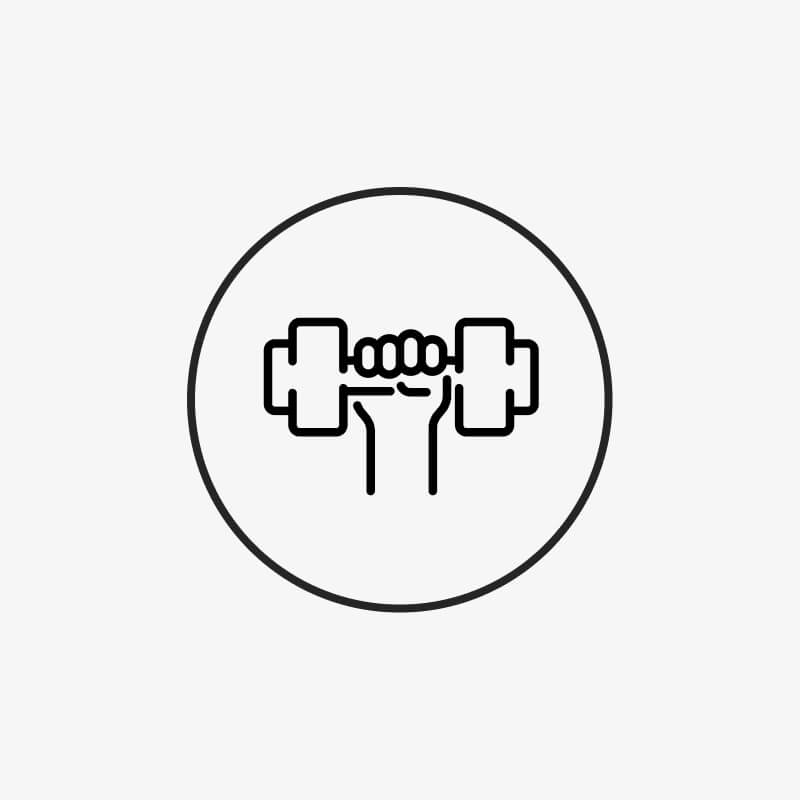The ABCs of Running are perfect for improving your running form. Learn how to save energy while running, become faster, and protect your joints at the same time!
Table of contents
1. What is the running ABC?
As the name suggests, the ABC of Running is an important foundation for every runner. It's a running workout that helps you improve your running form through a series of technical exercises .
Put simply, it's about improving posture , foot strike , core stability , and coordination while running. This is often referred to as " economizing your running style ." This means, on the one hand, running more energy-efficiently and, on the other, protecting your joints [1].
Beginning runners often skip the ABCs. This usually leads to poor posture, a rather sluggish running style, and unnecessarily high joint stress. For advanced and professional runners, however, ABC exercises are often one of the most important components of their training plan.
2. What are the benefits of the running ABC?
You basically already know: The ABCs of Running improve your running technique ! Why is good technique so important? Because with better running technique, you can not only prevent injuries but also gain important benefits in terms of your muscle strength, leg coordination, and joint capacity [2].
The natural consequence is an improvement in stability and posture , which you can see and feel. When experts talk about economizing your running form, they primarily mean that you burn less valuable energy . This, in turn, allows you to run longer, more effortlessly, and faster.
When you want to prepare your running game for a fun run or maybe even a half marathon, you will quickly realize how important it is to conserve energy while running .
The increase in body coordination and stability that conscientiously performed running ABC exercises bring you also has a positive impact on your performance in other sports . Running-intensive sports like volleyball, basketball, or soccer in particular benefit greatly from being able to run with flawless technique.
BRAINEFFECT HACK : For perfect technique, you need one thing above all else: to stay on the ball. Our KICKBAR is a functional snack that helps keep your energy levels high. Crunchy nuts meet fatigue-busting vitamins B5 and B12 without feeling heavy on your stomach. The perfect snack before any run.
3. 5 Running ABC Exercises
1. Ankle work
A good exercise for strong and resilient ankles is ankle work. This involves running with slightly bent knees and taking small steps. The momentum should come from the ankles.
The toe of your raised leg points toward the floor, but bends briefly as you place the ball of your foot on the floor. Your arms are bent, and your hips remain stable throughout the exercise.
2. Skippings
When skipping, you raise your knees with a high stride frequency . Always place your feet on the balls of your feet. Your hips remain fixed. Your arms swing loosely, just as they would while running. Important: The knee angle must not exceed 45 degrees.
3. Heeling
Heel raises strengthen the hamstring and calf muscles. Here, you actively pull your heel up toward your buttocks while your knee is bent and pointing downward.
Keep your arms actively supported at a right angle. Your upper body should be as straight as possible, but you can also bend forward slightly. Just make sure you don't hunch your back!
4. Hopscotch Run
The hop jump trains your foot's push-off from the ground, as well as the precision of your landing and full-body extension. You raise one knee while jumping off the other leg.
Important: The leg you take off from is always the leg you land on! Then simply switch sides. Ideally, your torso should stay as straight as possible.
5. Side hop
The side hop is essentially a more coordinated variation of the hop. Instead of performing the hops forward, you perform them sideways. It's important to resist the temptation to twist your upper body sideways.
6. Cross step
The cross-step is all about good leg coordination and hip flexibility . You walk sideways, alternating between moving one leg in front of and behind the other.
Tip : Your hips should definitely follow the rotation of your upper body. Ideally, they should rotate up to 140°. Your arms should be stretched out to your sides and parallel to the floor throughout the entire exercise.
7. Progression runs
Interval runs are characterized by an increase in running speed. You start at a slow pace and build up to a sprint . By definition, interval runs primarily cover distances between 60 and 150 m .
Here, too, technically correct execution is crucial to achieving the desired training results. The head and torso must remain upright at all times, while the arms are bent and swinging powerfully. The ball of the foot should only be placed on the ground.
4. What else you should pay attention to when running
The most important thing when running is a straight, upright torso , relaxed shoulders , and gently swinging arms . The arms should always swing forward at a right angle , not crossed .
Tight fists, wrists, and stiff arm muscles have no place when running. Although the arms aren't actively involved in running , it's still very important that they stay relaxed and beside the body .
If you don't pay attention to your arm posture or even tense up while running , this can quickly lead to unpleasant stiffness in the shoulder and neck area .
As you've already noticed in the exercises from the Running ABC, foot placement is also important . Ideally, it should always actively and dynamically adapt to your running speed .
If you're running at a normal pace , you'll want to try to stay in midfoot running . Only at a faster pace should you switch to ball running . Wondering whether you should practice the ABCs of running before or after a run?
Generally, it's better to incorporate technical training before the actual run . This way, you'll be focused enough to keep a close eye on your posture and coordination, but you'll also be able to test your progress immediately afterward.
Beyond your regular running training , you can also support your running performance from within . Therefore, ensure a balanced nutrient intake . Important minerals are often lost during exercise [3]. Therefore, you should make sure to regularly replenish your body with new minerals after training.
BRAINEFFECT HACK : Our unique nutrient combination in RECHARGE combines minerals and amino acids into a refreshing after-workout drink.
5. Talking Brains Podcast: Find your way to running
6. Conclusion
Beginners and advanced runners alike benefit from regularly practicing the ABCs of running. Those who make it a regular part of their weekly training schedule will run faster, more powerfully, and also protect their joints.
Pay attention to proper posture and foot placement during all exercises. Beginners may find it helpful to sign up for a running school or find a training partner. The best time to practice your technique exercises is always before starting a regular running session.
In addition to regular training sessions and a little self-discipline, a balanced nutrient intake will also help you stay on track with your training.
In particular, a mineral-rich diet combined with a high-quality supplement can help compensate for mineral deficiencies caused by strenuous physical activity and thus support your recovery.
7. Sources
[1] Barnes, K. R.; Kilding, AE (2015), Strategies to Improve Running Economy, Sports Medicine, Volume 45, Issue 1, p. 37 - 56, https://link.springer.com/article/10.1007%2Fs40279-014-0246-y.
[2] Agresta, C.; Brown, A. (2015), Running: Improving Form to Reduce Injuries (Summary), Gait Retraining for Injured and Healthy Runners Using Augmented Feedback: A Systematic Literature Review, Journal of Orthopedic and Sports Physical Therapy, Volume 45, Issue 8, p. 585, https://www.jospt.org/doi/10.2519/jospt.2015.0503.
[3] Lukaski, HC (2004), Vitamin and Mineral Status: Effects on Physical Performance, Nutrition, Volume 20, Issue 7 - 8, p. 632 - 644, https://www.sciencedirect.com/science/article/abs/pii/S0899900704000929?via%3Dihub.















